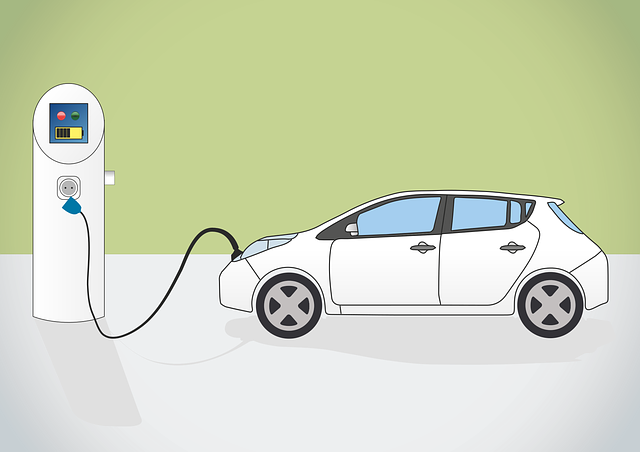Looking to register your car in California? This comprehensive guide walks you through the process, ensuring a smooth transition. From understanding state requirements to gathering essential documents and verifying your Vehicle Identification Number (VIN) using reliable VIN verifier tools, each step is crucial for a successful registration. By the end, you’ll have a clear path to completing the application, submitting necessary paperwork, and paying the required fees on time.
- Understand California Car Registration Requirements
- Gather Necessary Documents for Vehicle Registration
- Verify Your Vehicle's VIN (Vehicle Identification Number)
- Complete the California Car Registration Application
- Submit and Pay for Your Car Registration
Understand California Car Registration Requirements

Before registering your car in California, it’s crucial to understand the state’s specific requirements for vehicle registration and documentation. California requires a comprehensive approach to ensure road safety and proper vehicle identification. One essential step is obtaining an accurate Vehicle Identification Number (VIN) inspection, which serves as a foundational element during the registration process. This involves using reliable tools like a VIN verifier to cross-reference and validate the vehicle’s details.
A mobile VIN verification service can be particularly beneficial for convenience and accessibility. These services allow you to verify your car’s VIN online or through a mobile app, providing an efficient way to confirm ownership and ensure compliance before initiating the registration process with the California Department of Motor Vehicles (DMV).
Gather Necessary Documents for Vehicle Registration

Before you start the registration process, it’s crucial to gather all the essential documents for your vehicle. In California, this typically includes your Vehicle Identification Number (VIN) verifier, which can be obtained through a mobile VIN inspection or a visit to a designated center. The VIN is a unique code that identifies your car and is critical for official record-keeping.
Additionally, you’ll need proof of ownership, often in the form of a title document, as well as valid identification like a driver’s license. Other required paperwork might include registration fees, emissions test results (if applicable), and any necessary forms from previous owners or lease agreements. For a smooth registration experience, ensure all these documents are readily available before proceeding to the next steps.
Verify Your Vehicle's VIN (Vehicle Identification Number)

Before you start the registration process, it’s crucial to verify your vehicle’s VIN (Vehicle Identification Number). This unique code is a critical piece of information that identifies your car and its history. A mobile vin verifier app can make this task quick and convenient. By using a reliable mobile vin verification tool, you can easily check the vehicle’s details against databases, ensuring its authenticity and past usage.
A vin inspection is essential to prevent fraud and ensure compliance with California’s registration standards. With a simple VIN scan, you can gain access to vital information about your car’s make, model, year, and even previous owners. This step is a game-changer in streamlining the registration process, making it efficient and secure for all vehicle owners in the Golden State.
Complete the California Car Registration Application

To begin the registration process, you’ll need to complete the California Car Registration Application. This form can be obtained from the California Department of Motor Vehicles (DMV) website or at any local DMV office. Fill it out thoroughly, ensuring all information is accurate and up-to-date. One crucial element required is the Vehicle Identification Number (VIN), which acts as a unique identifier for your vehicle. Use a reliable VIN verifier, such as those offered by mobile vin inspection services, to ensure you have the correct number. This step is essential for tracking vehicle history and ensuring compliance with California’s registration requirements.
When filling out the application, remember to include details like the make, model, year, and color of your car, along with your personal information as the owner or registered operator. Additionally, provide proof of insurance and ensure you meet all necessary conditions set by the DMV. After completing the form, submit it along with the required documents and fees at your nearest California DMV office, or opt for a mobile vin inspection service to streamline the process from the comfort of your home.
Submit and Pay for Your Car Registration

After verifying your vehicle’s information and ensuring all documents are in order, it’s time to submit your application for registration. This can typically be done online or at a local California Department of Motor Vehicles (DMV) office. For convenience, some individuals opt for a mobile vin inspection or mobile vin verifier service to complete this step remotely.
When submitting your car registration, you’ll need to pay the associated fees. These costs vary based on factors like vehicle type and age, but they usually include a registration fee and possibly other taxes. Make sure to use the Vehicle Identification Number (VIN) verifier provided by the DMV or a trusted third-party service to ensure accuracy during this process.
Registering a car in California is a straightforward process that requires understanding specific requirements and gathering essential documents. By verifying your vehicle’s VIN using reliable tools, ensuring all paperwork is in order, and completing the application accurately, you can efficiently navigate the registration process. Remember to submit and pay for your car registration promptly to avoid any legal issues and keep your vehicle legally compliant on California roads.
